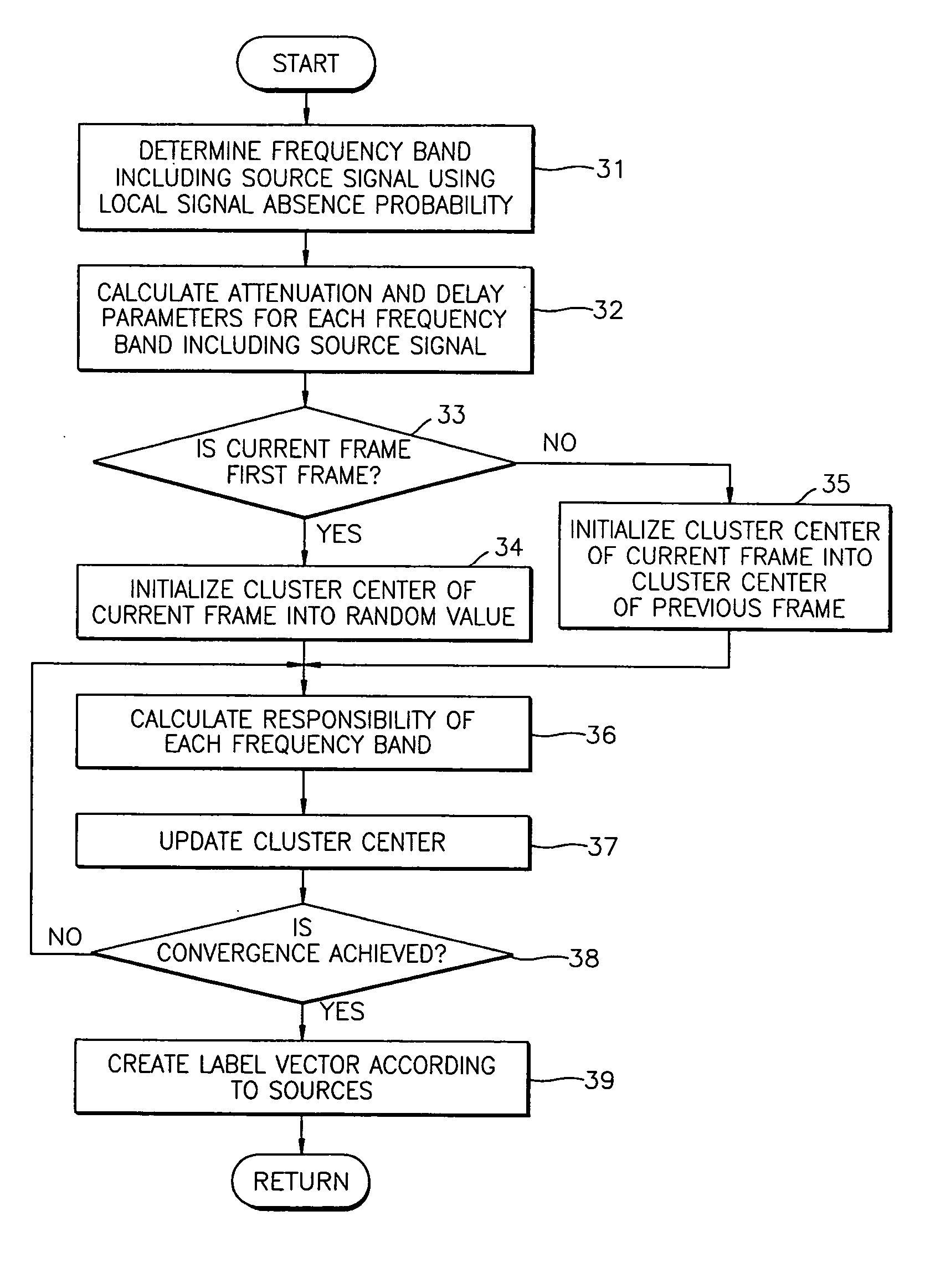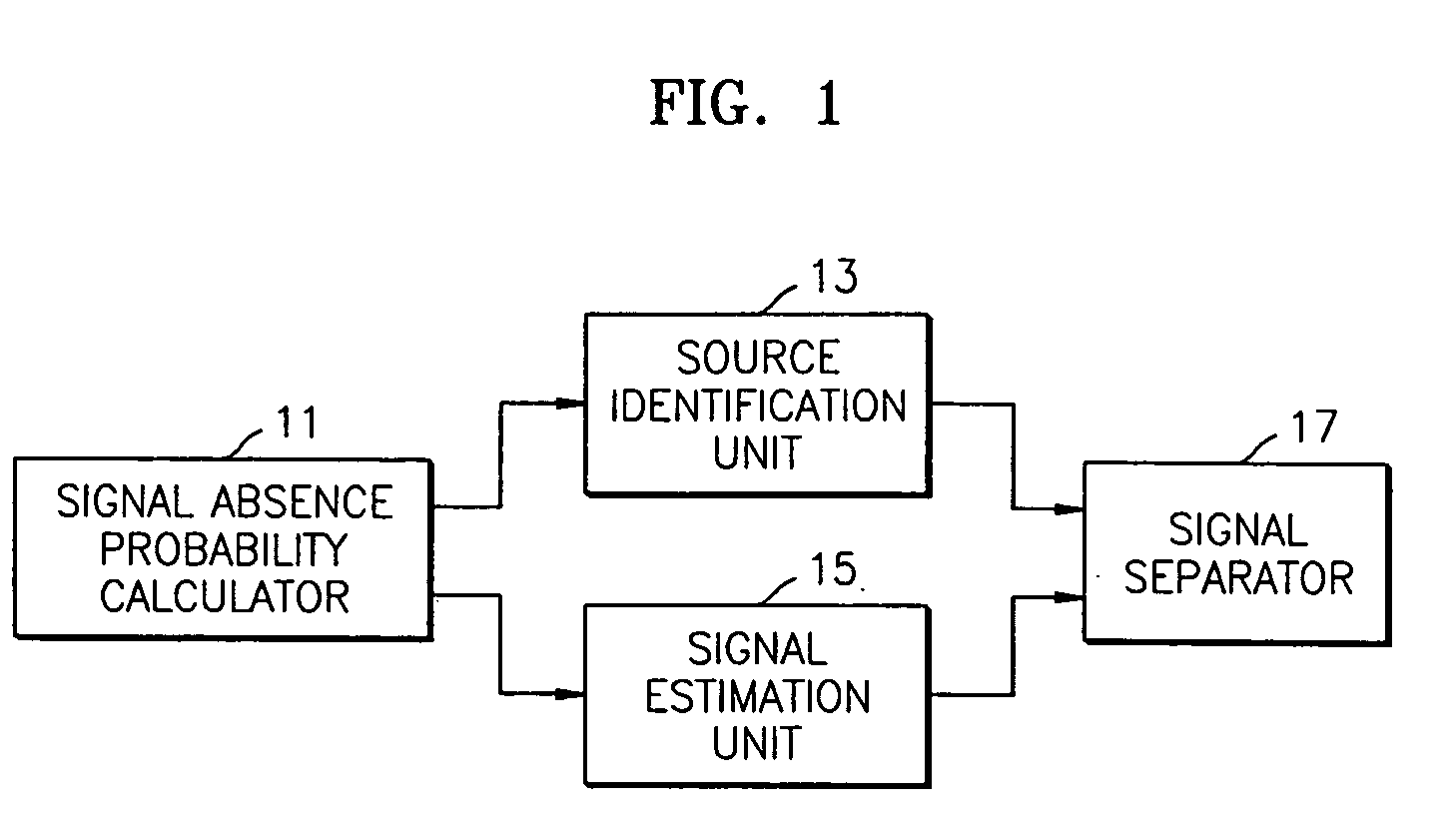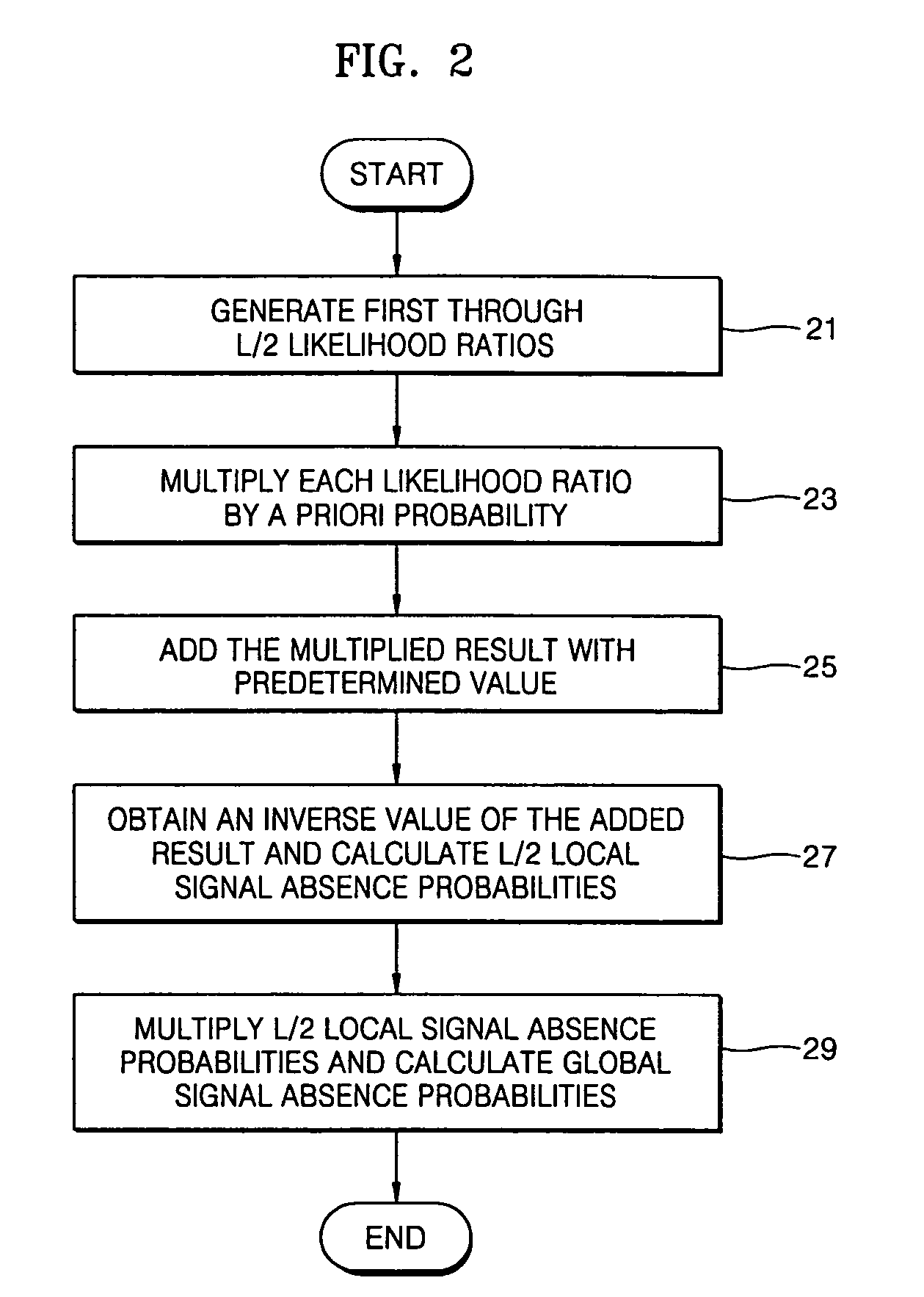Method and apparatus for blind source separation using two sensors
a technology of two sensors and source separation, applied in the field of blind source separation, can solve the problems of noise elimination performance greatly deterioration, signal separation performance greatly deterioration, performance of the mobile sound input system, etc., and achieve the effect of removing noise from the received signal
- Summary
- Abstract
- Description
- Claims
- Application Information
AI Technical Summary
Benefits of technology
Problems solved by technology
Method used
Image
Examples
first embodiment
[0036] FIG. 1 is a block diagram of a signal separation apparatus according to the present invention. The signal separation apparatus comprises a signal absence probability calculator 11, a source identification unit 13, a signal estimation unit 15, and a source signal separator 17. The signal separation apparatus separates N independent sources from M microphone observations, where M.ltoreq.N. Hereinafter, for convenience of description, an exemplary case when M=2 will be described.
[0037] Referring to FIG. 1, the signal absence probability calculator 11 calculates a global signal absence probability p(H.sub.0.vertline.X(m)) and a local signal absence probability p(H.sub.0,k.vertline.Xk(m)) for each of the frequency bins of an m-th frame, for one of the first and second microphone observations which are received through two sensors, for example, two microphones, and are transformed into frequency-domain signals. Referring to FIG. 2, this calculation is described in more detail as fo...
second embodiment
[0095] FIG. 7 is a block diagram of a signal separation apparatus according to the present invention, wherein the source separation apparatus comprises a signal absence probability calculator 71, a signal estimation unit 73, a source identification unit 75, and a source signal separator 77.
[0096] Referring to FIG. 7, the signal absence probability calculator 71 calculates the global signal absence probabilities p(Ho.vertline.X1(m)) and p(Ho.vertline.X2(m)) for the m-th frame and the local signal absence probabilities p(Ho,k.vertline.X1,k(m)) and p(Ho,k.vertline.X2,k(m)) at each of frequency bins of the m-th frame, for the first and second microphone observations X1(m) and X2(m).
[0097] The signal estimation unit 73 estimates a spectrum vector in which noise signals are eliminated for each frequency band per frames using the global signal absence probabilities calculated by the signal absence probability calculator 71, for the first and second microphone observations, and generates fi...
PUM
 Login to View More
Login to View More Abstract
Description
Claims
Application Information
 Login to View More
Login to View More - R&D
- Intellectual Property
- Life Sciences
- Materials
- Tech Scout
- Unparalleled Data Quality
- Higher Quality Content
- 60% Fewer Hallucinations
Browse by: Latest US Patents, China's latest patents, Technical Efficacy Thesaurus, Application Domain, Technology Topic, Popular Technical Reports.
© 2025 PatSnap. All rights reserved.Legal|Privacy policy|Modern Slavery Act Transparency Statement|Sitemap|About US| Contact US: help@patsnap.com



